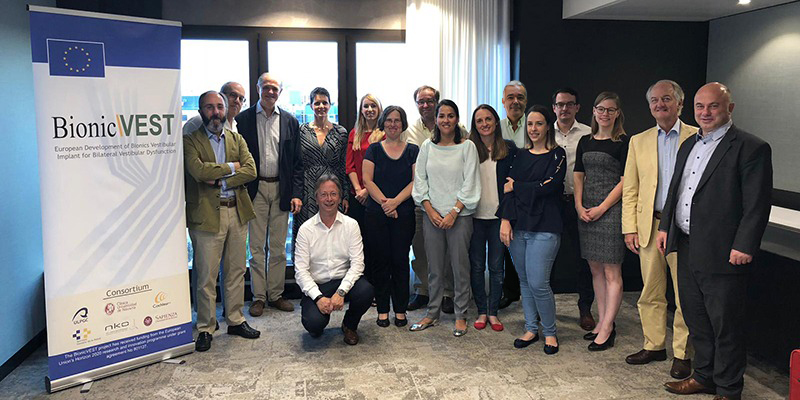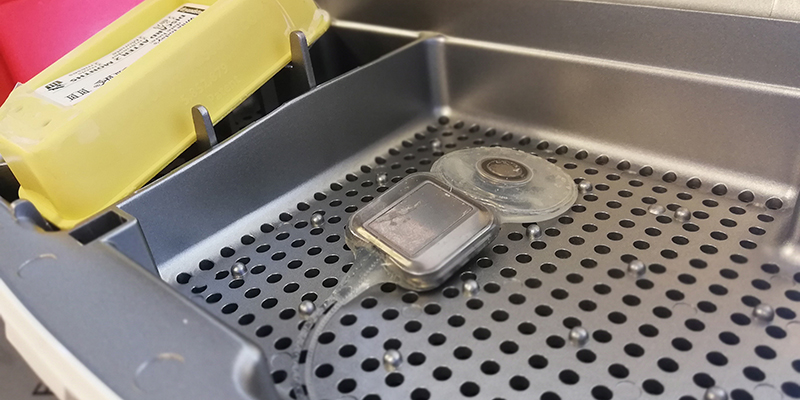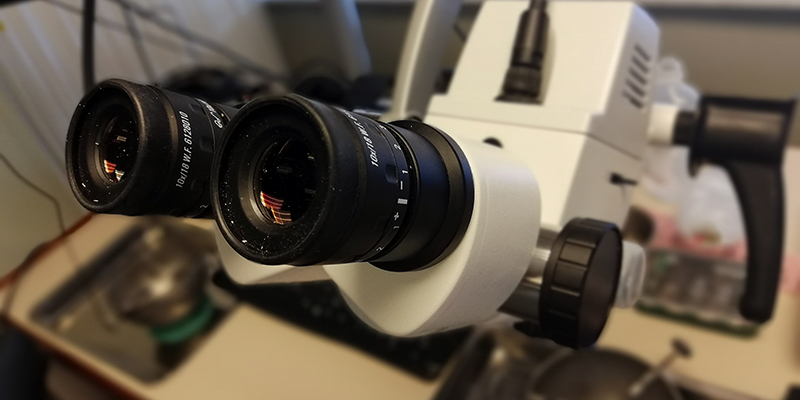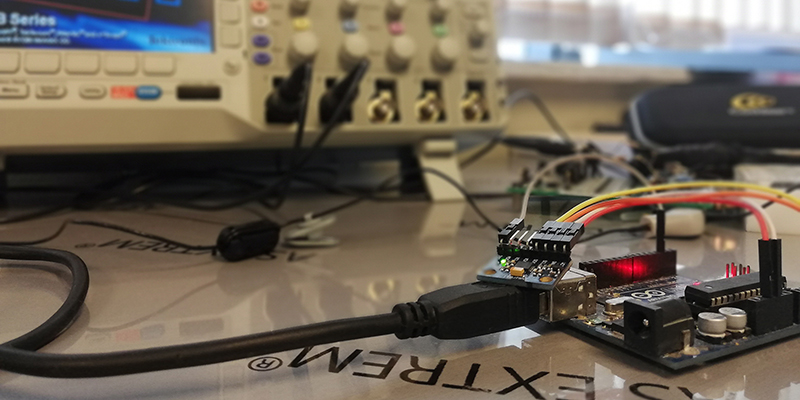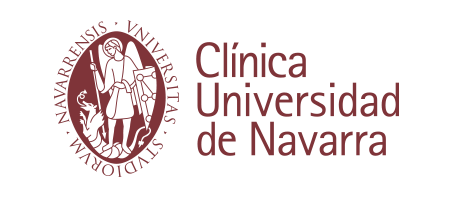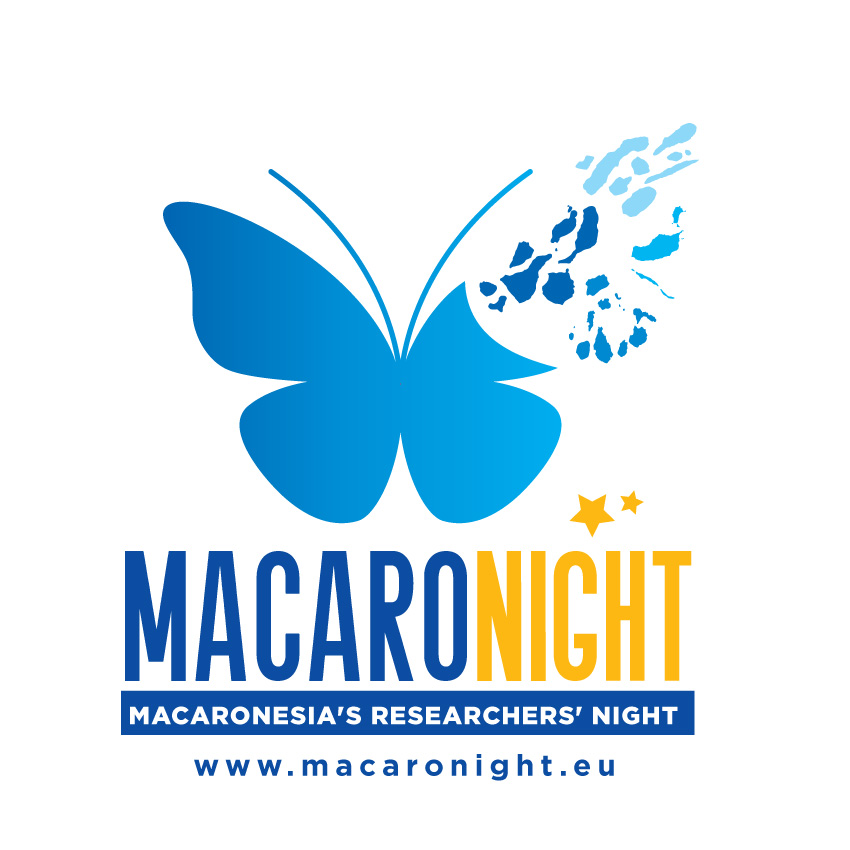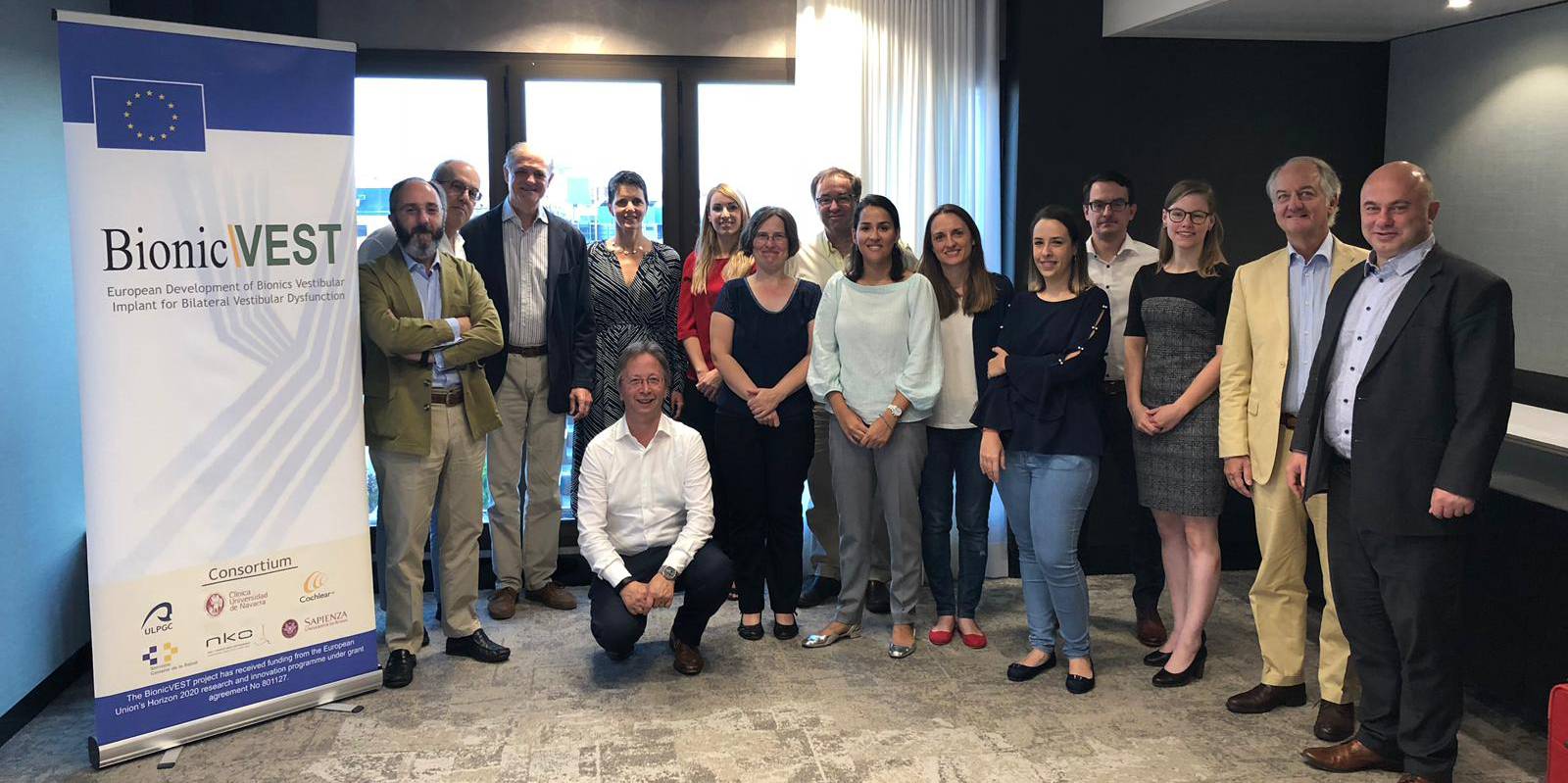About

At the Bionic\VEST consortium, we foresee bringing a commercially viable, highly technological breakthrough solution for the severe vestibular disorders with the potential to improve the lives of millions by recovering their postural equilibrium. Bionic\VEST aspires to be the third bionic prosthesis in human history after cochlear implant and retinal prosthesis. The cochlear implant is the only bionic prosthesis capable of satisfactorily restoring a sense. The performance of the retinal prosthesis is technologically limited allowing for relatively low resolution and basic daily activities only. A vestibular prosthesis can over-perform the later in becoming a commercial reality.
The vestibular labyrinths, saccule and utricle, provide sensory input to neural circuits that facilitate accurate perception of spatial orientation and heading, support stable posture, and maintain steady vision. This contributes at 60% to the vestibular function and postural balance. Saccule and utricle function is essential for self-reported dizziness and for postural balance in upright position and gait. More than 100 million people worldwide suffer from severe vestibular disorders, thus being at high risk of falls and injuries. This seriously handicaps their lives, disabling them of doing routine daily activities, such as driving and even walking. Restoring the function of the vestibular labyrinths was not possible until now, as they ware surgically inaccessible due to their complex structure. The general objective of the Bionic\VEST is the development of a device to measure the cephalic movements in the three spatial planes and code this information to the vestibular nerve to substitute hair cell sensors in the maculae of the saccule and utricle, or to stimulate the vestibular nerve with a constant pulse train to mitigate dysbalance due to malfunction of the otolithic organ.
